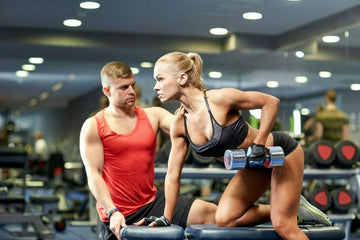The method of proper preparation/warm-up before exercise has always been controversial among athletes. While some of them swear by it, others see warm-ups as a waste of energy that should be avoided. But which approach is correct?
The importance of warming up properly before exercise Warming up is indeed important! Because it fulfills numerous functions that ultimately lead to better athletic performance and better physical protection. The following points play an important role in this context:
1. Warming up provides physical preparation by stimulating and warming up the muscles
2. It is also about mental processes: If you warm up, you are already preparing yourself for the stressful situation
3. The body is given the opportunity to get better results from training through preparation
4. The body temperature increases - 39 degrees Celsius is optimal for supporting important metabolic processes
5. Oxygen supply and utilization increases - usually by about three times.
How should a correct warm-up be done?
The correct warm-up is divided into different phases and processes, each of which has its own important meaning. First and foremost is the so-called "general" warm-up. This involves the entire body and prepares it completely and as a unit for the expected performance. It is also about mental preparation. Anyone who warms up correctly should also keep certain mental images in mind that show them, for example, at peak sporting performances or victories. This motivates and strengthens the mind and body for training and competition.
The general warm-up is part of endurance training, which can be done in the studio on a stepper or exercise bike, for example. This warms up the large muscle groups and provides them with good blood flow, and strengthens the heart. This first phase of warming up should be slow at first and then increased, and should last about a quarter of an hour. After the calm start, the goal is to reach a pulse rate in the range of 120 to 140 beats per minute.
The next step in an athlete's training plan is a "special" or "specific" warm-up. This takes into account the planned sport and the muscle groups that are to be trained during the actual training. By paying special attention to these muscle groups, the blood flow and body heat are shifted to this area. In addition, the supply of oxygen to these muscle groups increases. This protects against injuries and results in optimal preparation, which is of great importance for good training success. The type of special/specific warm-up should be based on the typical movement of the chosen sport. At this point, the muscles should be introduced to the type of movement that they perform during the competition. The length of this phase depends on personal feelings and cannot be given as a general rule. In addition to personal preferences and the type of sport chosen, environmental influences such as the outside temperature also play an important role.





